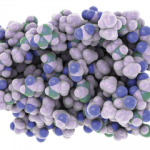WASHINGTON, D.C.—Kids with lupus get really sick. Widespread corticosteroid use remains the norm, and side effects can be particularly nasty in growing and developing children. The diagnosis is difficult to make, disease activity monitoring isn’t straightforward, and currently no helpful predictors of end-organ involvement exist. Therapeutic options remain a concern too, with only one of three U.S. Food & Drug Administration-approved drugs approved for systemic lupus erythematosus (SLE) in the past 65 years validated for childhood-onset SLE (cSLE).

Dr. Virginia Pascual
The good news? Researchers are using novel technologies to push the needle closer toward personalized medicine in cSLE every day. At the ACR Convergence 2024 session Toward Personalized Medicine in Pediatric Lupus, Virginia Pascual, MD, director, Drukier Institute for Children’s Health and Ronay Menschel Professor of Pediatrics, Weill Cornell Medical College, New York, shared insights into where we are and where we are going when it comes to better understanding cSLE.
Novel Techniques Explained
Sequencing techniques and new approaches are helping researchers better understand the complex causes of cSLE by looking at the disease from many angles. Methods like whole genome sequencing (WGS) and RNA sequencing allow scientists to study genetic changes and differences in gene activity that may play a role in the development of disease. By identifying specific genes and immune pathways that are disrupted in the disease, we may find new ways to diagnose and treat cSLE earlier.
Additionally, “-omics” methodologies allow researchers to study large groups of molecules at once. These include genomics (studying genes), transcriptomics (studying gene activity), proteomics (studying proteins) and metabolomics (studying small molecules that are involved in metabolism). By looking at all these molecules at once as one big picture, researchers can better understand how they work together to affect health and disease, providing insights that are difficult to get from studying just one molecule at a time.
SLE Is an Interferonopathy
We have understood that increased interferon (IFN) activity is a hallmark of SLE for over 20 years.1 However, Dr. Pascual explained, “We have learned over the years that it’s not that simple. And the most clear hint to that is that, today, we can target the type I IFN pathway in different ways, including blocking the type I IFN receptor [with anifrolumab]. This [method] works well for many patients, especially those with cutaneous SLE, but it’s not for every patient with systemic or renal disease. We’ve made great advances, but we aren’t yet there.”2,3
